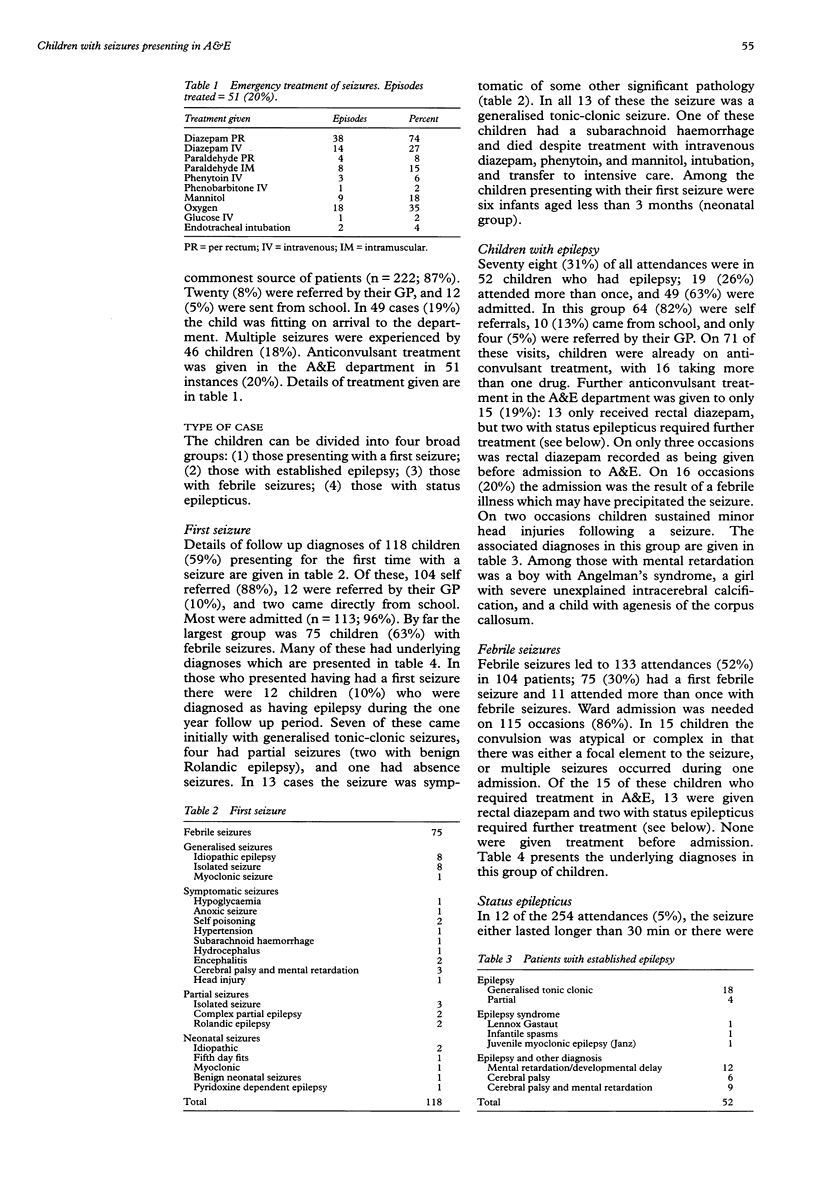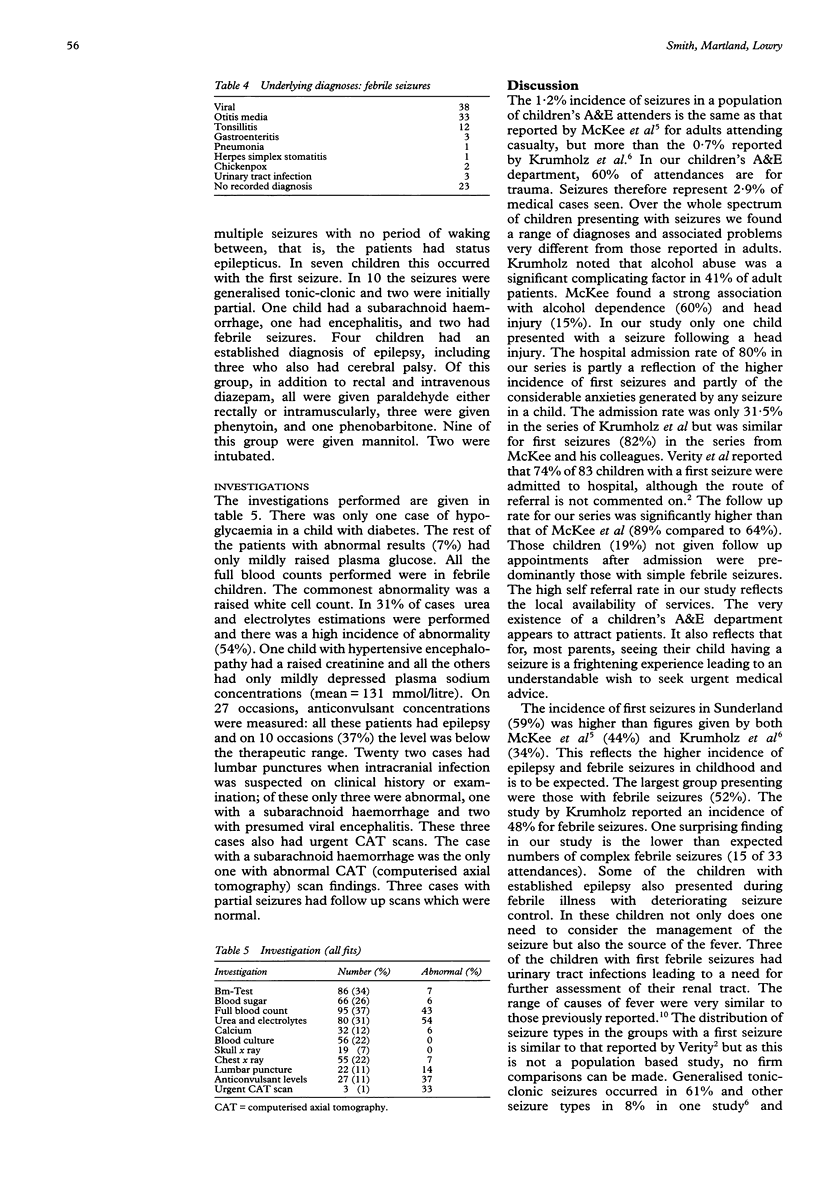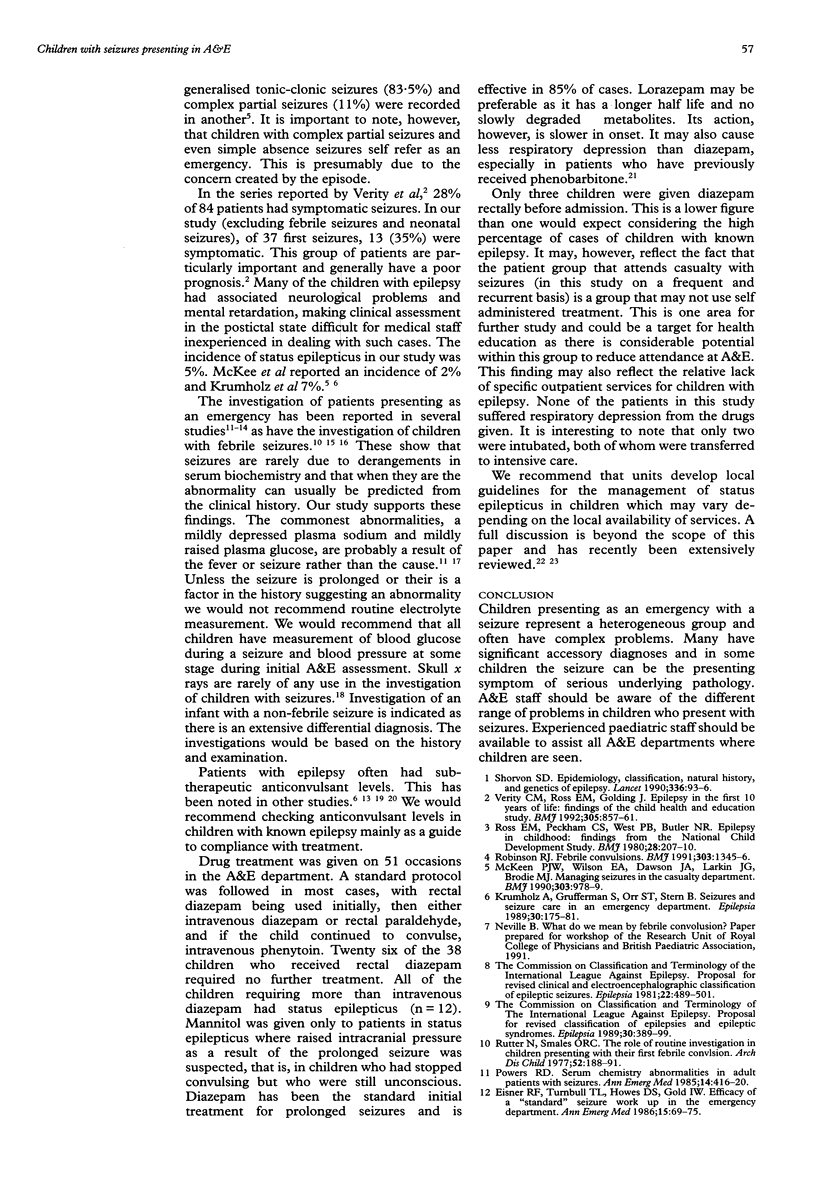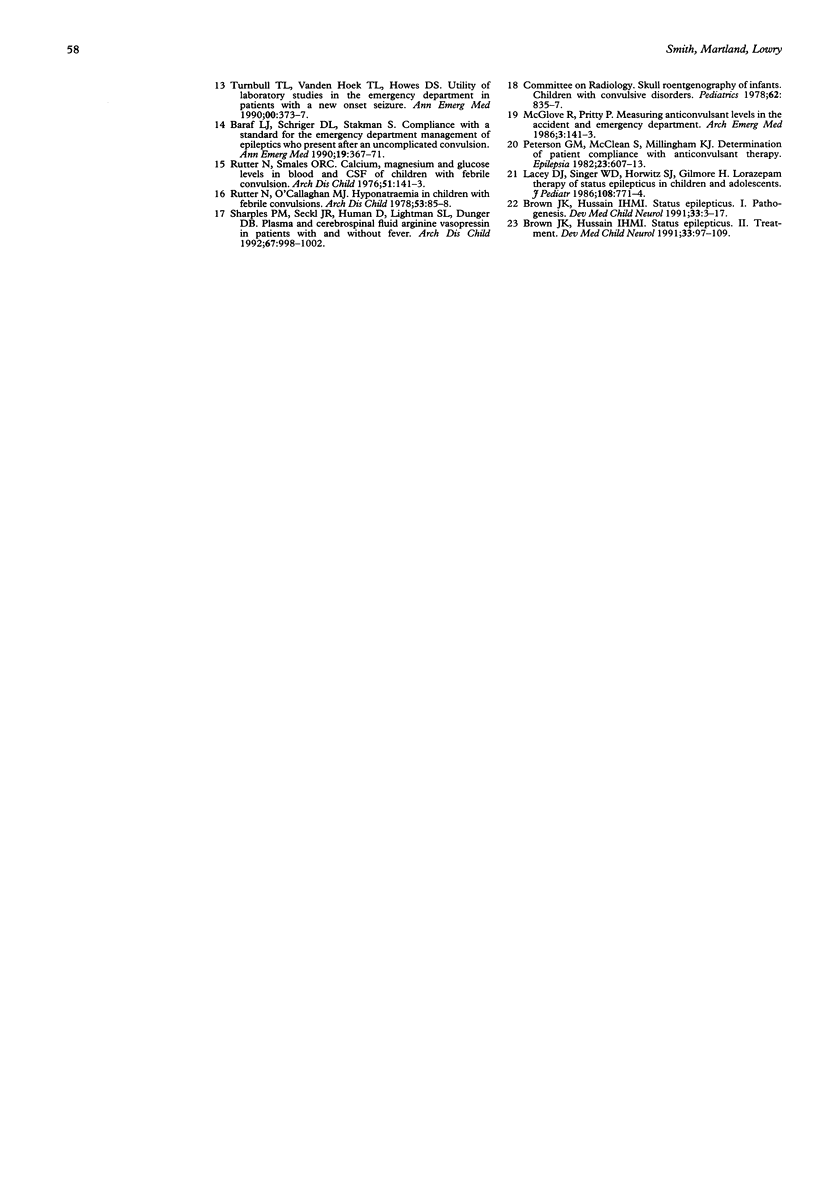Abstract
OBJECTIVE: To analyse the diagnoses made in children presenting to an accident and emergency (A&E) department with seizures. METHODS: All children who presented to a district general hospital A&E department with seizures over a 1 year period were identified. A retrospective review of A&E and hospital records was performed one year after they were first seen. The types of seizure, investigations performed, treatment given, and the range of associated diagnoses were ascertained. RESULTS: 199 children (of 21,795 attending A&E in the year) had 254 visits with seizures, which represented 1.2% of the child attendances at A&E. Self referral occurred in 87%, and 52 patients had established epilepsy. Febrile seizures were far the commonest type of first seizure (n = 75), but there were also 13 cases of symptomatic seizures resulting from various metabolic and neurological causes. CONCLUSIONS: The children studied had a very different spectrum of problems from adults. A&E staff should be aware of the range of problems in children who present with seizures. Experienced paediatric staff should be available to assist all A&E departments where children are seen.
Full text
PDF




Selected References
These references are in PubMed. This may not be the complete list of references from this article.
- Baraff L. J., Schriger D. L., Starkman S. Compliance with a standard for the emergency department management of epileptics who present after an uncomplicated convulsion. Ann Emerg Med. 1990 Apr;19(4):367–372. doi: 10.1016/s0196-0644(05)82336-4. [DOI] [PubMed] [Google Scholar]
- Krumholz A., Grufferman S., Orr S. T., Stern B. J. Seizures and seizure care in an emergency department. Epilepsia. 1989 Mar-Apr;30(2):175–181. doi: 10.1111/j.1528-1157.1989.tb05451.x. [DOI] [PubMed] [Google Scholar]
- Lacey D. J., Singer W. D., Horwitz S. J., Gilmore H. Lorazepam therapy of status epilepticus in children and adolescents. J Pediatr. 1986 May;108(5 Pt 1):771–774. doi: 10.1016/s0022-3476(86)81065-4. [DOI] [PubMed] [Google Scholar]
- McGlone R., Pritty P. Measuring anti-convulsant levels in the accident and emergency department. Arch Emerg Med. 1986 Jun;3(2):141–143. doi: 10.1136/emj.3.2.141. [DOI] [PMC free article] [PubMed] [Google Scholar]
- McKee P. J., Wilson E. A., Dawson J. A., Larkin J. G., Brodie M. J. Managing seizures in the casualty department. BMJ. 1990 Apr 14;300(6730):978–979. doi: 10.1136/bmj.300.6730.978. [DOI] [PMC free article] [PubMed] [Google Scholar]
- Peterson G. M., McLean S., Millingen K. S. Determinants of patient compliance with anticonvulsant therapy. Epilepsia. 1982 Dec;23(6):607–613. doi: 10.1111/j.1528-1157.1982.tb05075.x. [DOI] [PubMed] [Google Scholar]
- Powers R. D. Serum chemistry abnormalities in adult patients with seizures. Ann Emerg Med. 1985 May;14(5):416–420. doi: 10.1016/s0196-0644(85)80284-5. [DOI] [PubMed] [Google Scholar]
- Robinson R. J. Febrile convulsions. BMJ. 1991 Nov 30;303(6814):1345–1346. doi: 10.1136/bmj.303.6814.1345. [DOI] [PMC free article] [PubMed] [Google Scholar]
- Ross E. M., Peckham C. S., West P. B., Butler N. R. Epilepsy in childhood: findings from the National Child Development Study. Br Med J. 1980 Jan 26;280(6209):207–210. doi: 10.1136/bmj.280.6209.207. [DOI] [PMC free article] [PubMed] [Google Scholar]
- Rutter N., O'Callaghan M. J. Hyponatraemia in children with febrile convulsions. Arch Dis Child. 1978 Jan;53(1):85–87. doi: 10.1136/adc.53.1.85. [DOI] [PMC free article] [PubMed] [Google Scholar]
- Rutter N., Smales O. R. Calcium, magnesium, and glucose levels in blood and CSF of children with febrile convulsions. Arch Dis Child. 1976 Feb;51(2):141–143. doi: 10.1136/adc.51.2.141. [DOI] [PMC free article] [PubMed] [Google Scholar]
- Rutter N., Smales O. R. Role of routine investigations in children presenting with their first febrile convulsion. Arch Dis Child. 1977 Mar;52(3):188–191. doi: 10.1136/adc.52.3.188. [DOI] [PMC free article] [PubMed] [Google Scholar]
- Sharples P. M., Seckl J. R., Human D., Lightman S. L., Dunger D. B. Plasma and cerebrospinal fluid arginine vasopressin in patients with and without fever. Arch Dis Child. 1992 Aug;67(8):998–1002. doi: 10.1136/adc.67.8.998. [DOI] [PMC free article] [PubMed] [Google Scholar]
- Shorvon S. D. Epidemiology, classification, natural history, and genetics of epilepsy. Lancet. 1990 Jul 14;336(8707):93–96. doi: 10.1016/0140-6736(90)91603-8. [DOI] [PubMed] [Google Scholar]
- Turnbull T. L., Vanden Hoek T. L., Howes D. S., Eisner R. F. Utility of laboratory studies in the emergency department patient with a new-onset seizure. Ann Emerg Med. 1990 Apr;19(4):373–377. doi: 10.1016/s0196-0644(05)82337-6. [DOI] [PubMed] [Google Scholar]
- Verity C. M., Ross E. M., Golding J. Epilepsy in the first 10 years of life: findings of the child health and education study. BMJ. 1992 Oct 10;305(6858):857–861. doi: 10.1136/bmj.305.6858.857. [DOI] [PMC free article] [PubMed] [Google Scholar]


